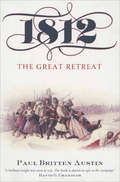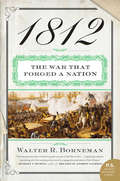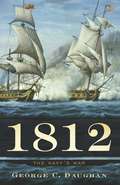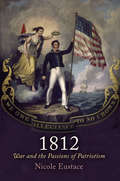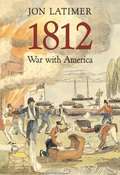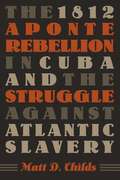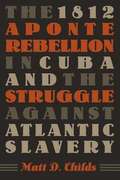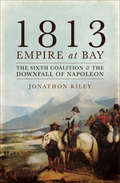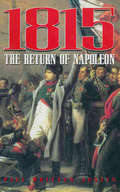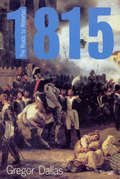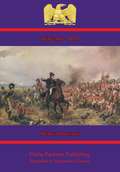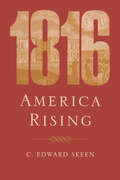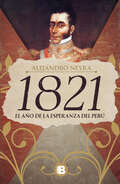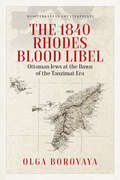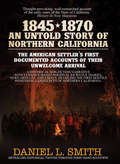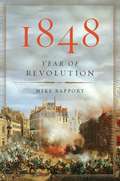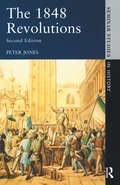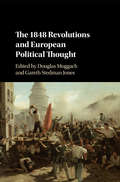- Table View
- List View
1812: The Great Retreat
by Paul Britten Austin1812: The Great Retreat the third and final volume in Austins magisterial trilogy concludes the story of one of history's most disastrous campaigns. The author's previous books brought the Grand Army to the head-on battle at Malo-Jaroslavetz after withdrawing sixty miles from the burnt down capital, and for the first time in his meteoric career Napoleon had to order a retreat. This volume follows the army's withdrawal through 800 miles of devastated countryside, crossing the horrific relics of the Borodino battlefield, fighting its way through the Russian General Kutusov's successive attempts to cut it off, and winning, against overwhelming odds, the three-day battle of the Berezina crossing. First-hand narratives, many published in English for the first time, describe Marshal Ney's astounding achievement in holding together the rear-guard until he himself, musket in hand, was the last man to re-cross the Niemen into Poland.Using the words of the participants themselves, Paul Britten Austin brings unparalleled authenticity and immediacy to his unique account of the closing stages of Napoleon's dramatic and tragic 1812 campaign.
1812: The March On Moscow
by Paul Britten AustinThis account of Napoleon&’s disastrous invasion of Russia, in the words of those who experienced it, offers &“a brilliant insight into men at war&” (David G. Chandler, author of The Campaigns of Napoleon). Hundreds of thousands of men set out on that midsummer day of 1812. None could have imagined the terrors and hardships to come. They&’d been lured all the way to Moscow without having achieved the decisive battle Napoleon sought—and by the time they reached the city, their numbers had already dwindled by more than a third. One of the greatest disasters in military history was in the making. The fruit of more than twenty years of research, this superbly crafted work skillfully blends the memoirs and diaries of more than a hundred eyewitnesses, all of whom took part in the Grand Army&’s doomed march on Moscow, to reveal the inside story of this landmark military campaign. The result is a uniquely authentic account in which the reader sees and experiences the campaign through the eyes of participants in enthralling day-by-day, sometimes hour-by-hour detail.
1812: The War of 1812 (P. S. Series)
by Walter R. BornemanIn June 1812 the still-infant United States had the audacity to declare war on the British Empire. Fought between creaking sailing ships and armies often led by bumbling generals, the ensuing conflict featured a tit-for-tat "You burned our capital, so we'll burn yours" and a legendary battle unknowingly fought after the signing of a peace treaty. During the course of the war, the young American navy proved its mettle as the USS Constitution, "Old Ironsides," sent two first-rate British frigates to the bottom, and a twenty-seven-year-old lieutenant named Oliver Hazard Perry hoisted a flag exhorting, "Don't Give Up the Ship," and chased the British from Lake Erie. By 1814, however, the United States was no longer fighting for free trade, sailors' rights, and as much of Canada as it could grab, but for its very existence as a nation. With Washington in flames, only a valiant defense at Fort McHenry saved Baltimore from a similar fate. Here are the stories of commanding generals such as America's Henry "Granny" Dearborn, double-dealing James Wilkinson, and feisty Andrew Jackson, as well as Great Britain's gallant Sir Isaac Brock, overly cautious Sir George Prevost, and Rear Admiral George Cockburn, the man who put the torch to Washington. Here too are those inadvertently caught up in the war, from heroine farm wife Laura Secord, whom some call Canada's Paul Revere, to country doctor William Beanes, whose capture set the stage for Francis Scott Key to write "The Star-Spangled Banner." 1812: The War That Forged a Nation presents a sweeping narrative that emphasizes the struggle's importance to America's coming-of-age as a nation. Though frequently overlooked between the American Revolution and the Civil War, the War of 1812 did indeed span half a continent -- from Mackinac Island to New Orleans, and Lake Champlain to Horseshoe Bend -- and it paved the way for the conquest of the other half. During the War of 1812, the United States cast aside its cloak of colonial adolescence and -- with both humiliating and glorious moments -- found the fire that was to forge a nation.
1812: The Navy's War
by George C. DaughanAt the outbreak of the War of 1812, America’s prospects looked dismal. It was clear that the primary battlefield would be the open ocean-but America’s war fleet, only twenty ships strong, faced a practiced British navy of more than a thousand men-of-war. Still, through a combination of nautical deftness and sheer bravado, the American navy managed to take the fight to the British and turn the tide of the war: on the Great Lakes, in the Atlantic, and even in the eastern Pacific. In 1812: The Navy’s War, prizewinning historian George C. Daughan tells the thrilling story of how a handful of heroic captains and their stalwart crews overcame spectacular odds to lead the country to victory against the world’s greatest imperial power. A stunning contribution to military and national history, 1812: The Navy’s War is the first complete account in more than a century of how the U. S. Navy rescued the fledgling nation and secured America’s future.
1812
by Nicole EustaceAs military campaigns go, the War of 1812 was a disaster. By the time it ended in 1815, Washington, D.C., had been burned to the ground, the national debt had nearly tripled, and territorial gains were negligible. Yet the war gained so much popular support that it ushered in what is known as the "era of good feelings," a period of relative partisan harmony and strengthened national identity. Historian Nicole Eustace's cultural history of the war tells the story of how an expensive, unproductive campaign won over a young nation--largely by appealing to the heart.1812 looks at the way each major event of the war became an opportunity to capture the American imagination: from the first attempt at invading Canada, intended as the grand opening of the war; to the battle of Lake Erie, where Oliver Perry hoisted the flag famously inscribed with "Don't Give Up the Ship"; to the burning of the Capitol by the British. Presidential speeches and political cartoons, tavern songs and treatises appealed to the emotions, painting war as an adventure that could expand the land and improve opportunities for American families. The general population, mostly shielded from the worst elements of the war, could imagine themselves participants in a great national movement without much sacrifice. Bolstered with compelling images of heroic fighting men and the loyal women who bore children for the nation, war supporters played on romantic notions of familial love to espouse population expansion and territorial aggression while maintaining limitations on citizenship. 1812 demonstrates the significance of this conflict in American history: the war that inspired "The Star-Spangled Banner" laid the groundwork for a patriotism that still reverberates today.
1812: War with America
by Jon LatimerThe British viewed the War of 1812 as an ill-fated attempt by the young American republic to annex Canada. For British Canada, populated by many loyalists who had fled the American Revolution, this was a war for survival. The Americans aimed both to assert their nationhood on the global stage and to expand their territory northward and westward. Americans would later find in this war many iconic moments in their national story--the bombardment of Fort McHenry (the inspiration for Francis Scott Key's "Star Spangled Banner"); the Battle of Lake Erie; the burning of Washington; the death of Tecumseh; Andrew Jackson's victory at New Orleans--but their war of conquest was ultimately a failure. Even the issues of neutrality and impressment that had triggered the war were not resolved in the peace treaty. For Britain, the war was subsumed under a long conflict to stop Napoleon and to preserve the empire. The one lasting result of the war was in Canada, where the British victory eliminated the threat of American conquest, and set Canadians on the road toward confederation. Latimer describes events not merely through the eyes of generals, admirals, and politicians but through those of the soldiers, sailors, and ordinary people who were directly affected. Drawing on personal letters, diaries, and memoirs, he crafts an intimate narrative that marches the reader into the heat of battle.
The 1812 Aponte Rebellion in Cuba and the Struggle against Atlantic Slavery
by Matt D. ChildsIn 1812 a series of revolts known collectively as the Aponte Rebellion erupted across the island of Cuba, comprising one of the largest and most important slave insurrections in Caribbean history. Matt Childs provides the first in-depth analysis of the rebellion, situating it in local, colonial, imperial, and Atlantic World contexts.Childs explains how slaves and free people of color responded to the nineteenth-century "sugar boom" in the Spanish colony by planning a rebellion against racial slavery and plantation agriculture. Striking alliances among free people of color and slaves, blacks and mulattoes, Africans and Creoles, and rural and urban populations, rebels were prompted to act by a widespread belief in rumors promising that emancipation was near. Taking further inspiration from the 1791 Haitian Revolution, rebels sought to destroy slavery in Cuba and perhaps even end Spanish rule. By comparing his findings to studies of slave insurrections in Brazil, Haiti, the British Caribbean, and the United States, Childs places the rebellion within the wider story of Atlantic World revolution and political change. The book also features a biographical table, constructed by Childs, of the more than 350 people investigated for their involvement in the rebellion, 34 of whom were executed.
The 1812 Aponte Rebellion in Cuba and the Struggle Against Atlantic Slavery (Envisioning Cuba)
by Matt D. ChildsChilds explains how slaves and free people of color responded to the nineteenth-century "sugar boom" in the Spanish colony by planning a rebellion against racial slavery and plantation agriculture. Striking alliances among free people of color and slaves, blacks and mulattoes, Africans and Creoles, and rural and urban populations, rebels were prompted to act by a widespread belief in rumors promising that emancipation was near. Taking further inspiration from the 1791 Haitian Revolution, rebels sought to destroy slavery in Cuba and perhaps even end Spanish rule. By comparing his findings to studies of slave insurrections in Brazil, Haiti, the British Caribbean, and the United States, Childs places the rebellion within the wider story of Atlantic World revolution and political change.
1813: The Sixth Coalition & the Downfall of Napoleon
by Jonathon RileyA distinguished historian and British Army veteran examines the political and military alliances that led to the defeat of France in the Napoleonic Wars. 1813 was a critical year in the war that ended with the downfall of Napoleon—the year in which the balance of power tipped decisively against the French monarch&’s First Empire. In 1813: Empire at Bay, military historian and retired British Army Lt. Gen. Jonathon Riley explores the international alliance behind the major campaigns that raged across Europe and ultimately broke France&’s power. Focusing on the nations of the Sixth Coalition—Austria, Prussia, Russia, the United Kingdom, Portugal, Sweden, Spain, and the smaller German states—Riley reveals how this unprecedented alliance became the prototype of all uneasy modern coalitions. Despite their common enemy and shared goals, the international leaders and military officers had to navigate troubled command relationships, disagreements on strategy and operations, and clashing political ambitions. Riley also reassesses Napoleon&’s strengths and faults as an alliance commander, overseeing armies of not only Frenchmen but also Poles, Danes, Italians, Germans, and a host of other contingents. In vivid detail, Riley&’s groundbreaking book covers the battles of Lützen, Bautzen, Dresden, and Leipzig, demonstrating how they were each in their own way a decisive step toward Napoleon&’s defeat at Waterloo.
1815: The Return of Napoleon (The\napoleonic Library)
by Paul Britten AustinThe dramatic story of Napoleon&’s escape from Elba and march on Paris—in the words of eyewitnesses and participants. Drawing on hundreds of firsthand accounts by Napoleon&’s supporters and opponents, Paul Britten Austin recreates the drama of those tumultuous days of the spring of 1815 and throws light on the mixed French response to the unexpected return of their former emperor. 1815: The Return of Napoleon recreates, in the words of those present, Napoleon&’s dramatic landing at Antibes in the south of France; the first heady days of his arrival after almost a year of exile; his almost miraculous march across France; his arrival in Paris; and the coup which led to the fall of the Bourbons. Paul Britten Austin, author of an acclaimed trilogy on Napoleon&’s invasion of Russia, brings historical events to life and gives a dramatic insight into the hopes and fears of the French nation in that spring of 1815.
1815: The Roads to Waterloo
by Gregor DallasThe seventeen months from April 1814 to August 1815 were an extraordinary period in European history; a period which saw two sieges of Paris, a complete revision of Europe's political frontiers, an international Congress set up in Vienna, civil war in Italy and international war in Belgium.Gregor Dallas tells the story of these days through the perspectives of three very different European cities: the great metropolis of London, post-revolutionary Paris and baroque Vienna. The writing is almost cinematic in its power to evoke and bring to life the Europe of Tolstoy: the ebb and flow of power, of armies and of peoples across Europe's northern plains. Working essentially from primary sources, Dallas is as interested in the weather conditions before battle as in the way cartoonists reacted to court intrigues and fashions.It is also Europe seen through the eyes of its central players: Talleyrand, who has served nearly every French regime since the Revolution of 1789; Metternich, who devises new plans for a 'Germany' that does not yet exist and for a 'Europe' that remains devided; Wellington, who reveals himself a diplomat as well as a soldier; Tsar Alexander, an idealist seeking to impose a uniform plan for all Europe; and 'Boney' himself, who has his own ideal of Europe and, though banished to Elba, does not abandon his dream to realise it.
1815 — Waterloo [Illustrated Edition]
by Henry Houssaye S. R. WillisThis ebook is purpose built and is proof-read and re-type set from the original to provide an outstanding experience of reflowing text for an ebook reader. Waterloo Illustration Pack - 14 maps/battle plans, 18 portraits of the personalities engaged, 10 illustrations. Houssaye's history of the 1815 campaign stands out as perhaps the most complete and least biased French account of the campaign that culminated in the downfall of Napoleon. Filled with detail from numerous French sources and written in a light style, it provides a complete look at the campaign whilst keeping the narrative to a reasonable length. There is also an occasional flash of wit - usually missing from French accounts, substituted instead with accusation and counter accusation - which makes the book a real joy to read. For example, speaking of Grouchy on the morning of the 18th "Grouchy was eating some strawberries (to eat strawberries is not, moreover, a hanging matter, even on a morning of battle),..." Henry Houssaye, an esteemed member of the French Institute, wrote a number of works on the Napoleonic period (mainly of the later years of Napoleon), amongst them plays and ancient history. Title - 1815 -- Waterloo Author -- Henry Houssaye (1848-1911) Translation -- S. R. Willis (????-????) Text taken, whole and complete, from the edition published in 1905, Kansas, by Franklin Hudson Publishing Co. Original - 268 pages. Illustrations - The original map cannot be provided with this edition due to its A3 size - We have added our Waterloo Illustration pack to ensure that the reader can follow the text.
1816: America Rising
by C. Edward Skeen“Makes the case for 1816 as an important year in the development of the American nation. Well-written and -researched . . . recommended.”—Library JournalThe year 1816 found America on the cusp of political, social, cultural, and economic modernity. Celebrating its fortieth year of independence, the country’s sense of self was maturing. Americans, who had emerged from the War of 1812 with their political systems intact, embraced new opportunities. For the first time, citizens viewed themselves not as members of a loose coalition of states but as part of a larger union. This optimism was colored, however, by bizarre weather. Periods of extreme cold and severe drought swept the northern states and the upper south throughout 1816, which was sometimes referred to as “The Year Without a Summer.” In 1816 , historian C. Edward Skeen illuminates this unique year of national transition. Politically, the “era of good feelings” allowed Congress to devise programs that fostered prosperity. Social reform movements flourished. This election year found the Federalist party in its death throes, seeking cooperation with the nationalistic forces of the Republican party. Movement west, maturation of political parties, and increasingly contentious debates over slavery characterized this pivotal year. 1816 marked a watershed in American history. This provocative book vividly highlights the stresses that threatened to pull the nation apart and the bonds that ultimately held it together.“Reveals a sense of the fragility of the American experiment.” —Boston Globe“Skeen narrates the major events of [the era’s] opening 12 months with great skill . . . with clarity and verve.” —Publisher’s Weekly“A very impressive exposition of political culture in the early republic.” —Andrew Burstein, author of Jefferson’s Secrets
1821: El año de la esperanza del Perú
by Alejandro NeyraEn 1821, Alejandro Neyra relata los episodios fundamentales de aquel año decisivo que cambió el rumbo de nuestra historia. ¿Cómo se originó la gesta por la Independencia del Perú? ¿Quiénes fueron los personajes que diseñaron las estrategias y las negociaciones para acabar con el virreinato e instaurar la República? En 1821, Alejandro Neyra relata los episodios fundamentales de aquel año decisivo que cambió el rumbo de nuestra historia. Este libro narra las comunicaciones y los encuentros entre el marqués de Torre Tagle y don José de San Martín y sus huestes para formar una alianza con la única misión de luchar por la libertad. Conspiraciones, acuerdos fallidos y amistades sólidas se encuentran en las páginas de este libro. Neyra da vida a los protagonistas de esta historia en cuyos diálogos descubrimos un profundo deseo de justicia y de cambio en la vida social, marcada por el temor de hallarse entre dos bandos y la necesidad de escoger uno de ellos. En 1821 destaca la participación de Rosa Campusano, Carmen Guzmán, Mariana Echevarría y Basil Hall, entre otros personajes que contribuyeron a la Independencia y a los que, cumplido el Bicentenario, este libro busca dar justo homenaje. «1821 nos muestra cómo se vivió la Independencia en el norte del Perú y en Lima, llena de color la historia que conocemos y nos ayuda a imaginar lo que dijeron y vivieron sus protagonistas». Natalia Sobrevilla Perea
The 1840 Rhodes Blood Libel: Ottoman Jews at the Dawn of the Tanzimat Era (Mediterranean Counterpoints #1)
by Olga BorovayaThe Rhodes blood libel of 1840, an outbreak of anti-Jewish violence, was initiated by the island’s governor in collusion with Levantine merchants, who charged the local Jewish community with murdering a Christian boy for ritual purposes. An episode in the shared histories of Ottomans and Jews, it was forgotten by the former and, even if remembered, misunderstood by the latter. The 1840 Rhodes Blood Libel aims to restore the place of this event in Sephardi and Ottoman history. Based on newly discovered Ottoman and Jewish sources it argues that the acquittal of Rhodian Jews is adequately understood only in the context of the Tanzimat and the Sublime Porte’s foreign relations. Contrary to the common view that Ottoman Jews did not experience the impact of the Tanzimat reforms until the mid-1850s, this study shows that their effects were felt as early as 1840. Furthermore, this book offers a window onto life and intercommunal relations in the Eastern Mediterranean during the late Ottoman era.
1845-1870 An Untold Story of Northern California: The American Settler's First Documented Accounts of their Unwelcome Arrival
by Daniel Smith1845-1870 An Untold Story of Northern California is a revisionist historical non-fiction narrative of the American settling of Northern California, and their difficult experiences with local native conflicts that arose. These hostility's have been eyeballed and extensively written about through the eyes of the indigenous locals. Modern knowledge on the true experiences of the pioneers settling of this specific area of 19th century Northern California, today, is seemingly swept under the rug. This literature serves as a window for the reader to understand the mindsets and culture of the American settlers as they homesteaded the Northern California region from 1845 to 1870. This literature includes massive amounts of information regarding unheard-of regional hostilities and depredations against the American settlers during this time-frame. 1845-1870 An Untold Story of Northern California also exposes and ties-in certain cultural. religious, and legal functions that solidified the history of what truly happened during Northern California's unstable history! A must-have for students, teachers, and history enthusiasts!
1848: Year of Revolution
by Mike RapportIn 1848, a violent storm of revolutions ripped through Europe. The torrent all but swept away the conservative order that had kept peace on the continent since Napoleon's defeat at Waterloo in 1815--but which in many countries had also suppressed dreams of national freedom. Political events so dramatic had not been seen in Europe since the French Revolution, and they would not be witnessed again until 1989, with the revolutions in Eastern and Central Europe. In1848, historian Mike Rapport examines the roots of the ferment and then, with breathtaking pace, chronicles the explosive spread of violence across Europe. A vivid narrative of a complex chain of interconnected revolutions,1848tells the exhilarating story of Europe's violent "Spring of Nations" and traces its reverberations to the present day.
1848: Year Of Revolution
by x Mike RapportIn 1848, Europe was engulfed in a firestorm of revolution. The streets of cities from Paris to Bucharest and from Berlin to Palermo were barricaded and flooded by armed insurgents proclaiming political liberties and national freedom. The conservative order which had held sway since the fall of Napoleon in 1815 crumbled beneath the revolutionary assault. This book narrates the breathtaking events which overtook Europe in 1848, tracing brilliantly their course from the exhilaration of the liberal triumph, through the fear of social chaos to the final despair of defeat and disillusionment. The failures of 1848 would scar European history with the contradictions of authoritarianism and revolution until deep into the twentieth century.
1848: The Year of Revolutions (The International Library of Essays on Political History)
by Peter H. WilsonEurope was swept by a wave of revolution in 1848 that had repercussions stretching well beyond the Continent. Governments fell in quick succession or conceded significant reforms, before being rolled back by conservative reaction. Though widely perceived as a failure, the revolution ended the vestiges of feudalism, broadened civil society and strengthened the state prior to the rapid industrialisation and urbanisation of the latter part of the nineteenth century. This volume brings together essays from leading specialists on the international dimension, national experiences, political mobilisation, reaction and legacy.
The 1848 Revolutions (Seminar Studies)
by Peter JonesIn 1848 revolutions broke out all over Europe - in France, the Habsburg and German lands and the Italian peninsular. This Seminar Study considers why the revolutions occurred and why they were so widespread. The book offers a broad ranging investigation of the social, economic and political circumstances which led to the revolutions of 1848 as well as an account of the revolutions themselves. First published in 1981, and fully revised in 1991, the study has long established itself as one of the most accessible and valuable introductions to this complex subject.
The 1848 Revolutions and European Political Thought
by Gareth Stedman Jones Douglas MoggachThe revolutions that swept across Europe in 1848 marked a turning-point in the history of political and social thought. They raised questions of democracy, nationhood, freedom and social cohesion that have remained among the key issues of modern politics, and still help to define the major ideological currents - liberalism, socialism, republicanism, anarchism, conservatism - in which these questions continue to be debated today. This collection of essays by internationally prominent historians of political thought examines the 1848 Revolutions in a pan-European perspective, and offers research on questions of state power, nationality, religion, the economy, poverty, labour, and freedom. Even where the revolutionary movements failed to achieve their explicit objectives of transforming the state and social relations, they set the agenda for subsequent regimes, and contributed to the shaping of modern European thought and institutions.

